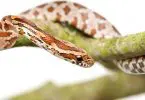Your adorable pet dogs have a lot of good features. An important aspect of their personality is they are curious creatures that can bring trouble for them at the same time. This quality, among others, is a concern when it comes to dogs licking, sniffing, biting, or eating things they shouldn’t. As dogs are curious and driven by prey footprints so they are inclined to sniff out frogs, toads, and other small creatures and take a whiff, lick, or bite them. This can be quite harmful to your dog sometimes, particularly if the creature is a frog or toad.
It is a matter of concern if your yard provides an excellent home for frogs and toads. A serious problem arises when you see your dog comes back from the yard foaming at the mouth one day. It turns out that, depending on where you live, your dog may have come into contact with a toxic frog.
Table of Contents
What To Do If A Dog Has Licked Or Eaten Up A Poisonous Frog?
If a frog is found in your surrounding, there is a possibility that your dog can catch or bite it. It is difficult to rule out whether the frog your dog has eaten is poisonous or not unless you are a veterinarian specialist. If you think your pet may have eaten or picked up something harmful, consider the following directions:
- For up to 10 minutes, immediately flush your dog’s mouth with water.
- Apply activated charcoal if your veterinarian recommends it.
- Take your dog to the veterinarian’s emergency facility right away.
- Don’t let that frog escape. It’s simple to rule out major toxins by correctly identifying the species.
Prepare for your dog to go through many procedures with your veterinarian, including IV fluid administration, a chilly bath to maintain temperature, and maybe an anaesthetic.
Is It A Frog Or A Toad?
A mouth of a dog can be foamed by eating both a frog and a toad. Both frogs and toads can release poisons from their glands but it depends on the species. Depending on the geographic region, a variety of species can be found. Toads are found in terrestrial regions while frogs are mostly aquatic.
Dogs are more likely to encounter and catch a toad than a frog. Toads lay their eggs in an aquatic environment, such as puddles after heavy rains, although they live on land for most of their lives. Toads also hop slowly, are unable to climb trees like treefrogs, and cannot flee by jumping vast distances and into the water like bullfrogs.
Why Do Dogs Foam After Eating A Frog Or A Toad?
The parotid glands of frogs produce a toxin known as bufotoxin. This poison is chemically complex and its composition varies between different species. These two glands protect the frogs from the harmful effects of predators. These glands in the skin of frogs are pressed when a dog bites them and a milky liquid is released. Almost quickly, the dog foams at the mouth and releases the toad.
How Do You Know That Your Dog Has Come In Contact With A Frog Or Toad?
It is not always possible to keep a tight check on your dog. It can sometimes become a bit too curious and licked taste, or even ate a frog or toad. While this is not always a cause for concern, there are some poisonous frogs or toads that can cause serious harm to your dog, as well as others that can produce unpleasant reactions. Check your dog’s mouth, for example, if you fear they went too close to a rodent. Is your dog mouth-watering? Do you notice your dog salivating a lot? Is he or she concentrating on their lips, tongue, or mouth in particular?
What Symptoms Of Toxicity Will A Dog Show Up If It Bites A Frog?
If your dog bites a toad, you should watch for particular symptoms that indicate your dog came into touch with a toxic toad.
Tumbling head, shaking, pawing at the mouth, trouble breathing, and excessive dribbling are all symptoms. Your dog may also have diarrhoea, fever, and vomiting yellow fluid. Seizures, dilated pupils, vocalization, vertigo, dropping, and even death are all possible neurological signs.
In case you observe any of these symptoms, immediately contact a veterinarian and follow the directions given in the later section.
Which Species Of Frogs Are Poisonous?
Two types of toads are known to be poisonous. The huge toad (bufo marinus), sometimes known as the marine toad or cane toad, is found in southern Texas, Hawaii, and Florida.
Its secretions are known to burn the eyes and irritate the skin, and they’re even capable of killing cats and dogs who consume it, according to the University of Florida.
The Sonoran desert toad, often known as the Colorado River Toad, is another bothersome toad (bufo alvarius). Southeastern California, New Mexico, Mexico, and much of southern Arizona are home to this toad.
How Do You Prevent Dogs From Biting A Frog?
Prevention, obedience orders, and keeping a close eye on your dog will be the most important aspects of training him to avoid frogs. For beginners, never leave your dog alone in the house late at night. The majority of toads and frogs are nocturnal, meaning they are most active after the sunsets. To minimize accidental frog or toad intake, make sure you keep a watch on your dog when he or she is outside at night. Additionally, if you live in an area where toads and frogs are common, you’ll need to discover outside settings where you may take your pet that is free of these amphibians.
If you want to move about outside in regions where there are toads and frogs, we also recommend that your dog knows commands like “No,” “stay,” and “leave it.” A firm “no” should be enough if your dog darts at a frog or even open its jaw to catch the frog. This will prevent your pooch from either a lot of misery or a serious result.
Conclusion
I hope the article helped you manage your furry fellow symptoms accordingly. However, might the case may be, DO NOT PANIC. Get immediate medical attention and you are good to go.
In case of any other query, drop down the comment or contact us. We would be happy to help.








